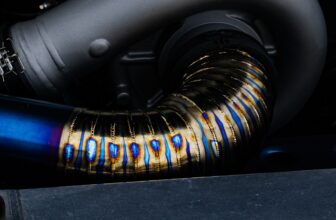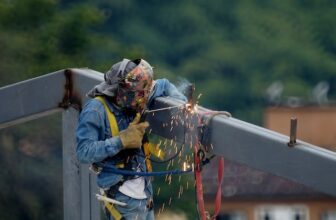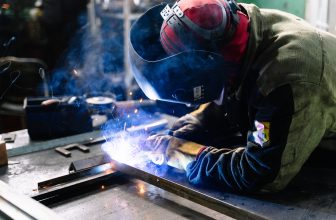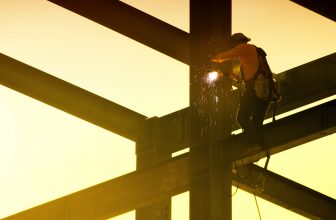There are many different welding beads, and each one is used for a specific purpose. In this blog post, we will discuss the three most common types of welding beads: TIG, MIG, and stick. We will talk about the pros and cons of each type of welding bead, so that you can decide which one is best for your project.
What is a welding bead?
A weld bead is a kind of filler used to fill holes in two pieces of metal. A deposit of filler metal from a single welding pass, often known as a welding bead.
When the wire or electrode is melted and fused into the steel, a bead is deposited on and in the work surface. A stringer bead has a very limited drag movement or slight vibration, whereas a web bead has a wider bounce.
A great weld is straightforward to identify. There will be no slag, cracks, or holes in it. There must be no breaks in the weld. It should not be too thin and there should be no pits or craters in the bead.
The movement of the torch as you melt a filler substance into the workpiece affects how quickly you move the puddle and what sort of bead you leave in the connection.
Types of Welding Beads
Torch manipulation is essentially the same whether you’re feeding a weld pool with a separate filler rod, a mechanically fed wire, or a stick electrode. However, there are some processes that utilize one particular type of torch more frequently.
Stringer bead
A stringer bead is a straightforward process in which the torch is dragged (i.e., “dragged”) or pushed perpendicularly across the joint with no, or little, side-to-side sidestep.
Dragging implies that the electrode is pointing in the “forward” welding direction, which drags the puddle. This gives optimum penetration and a strong-looking weld.
Welders “push” the tip of the torch on heat-sensitive or thin metals, or when welding vertically, in order to weld them. This necessitates leaning your torch away from the puddle while welding, and you must track it as you go.
Welding on a vertical junction is difficult because the molten metal wants to fall down. However, pushing the weld maintains heat away from the puddle and enables for an rapid solidification.
Weave beads
You may weave from side to side along a joint for broad welds. Weaving is the quickest method to complete a welding project when it comes to large joints.
In the instance of thick stock, groove welds are particularly essential. Weaves can also be found on fillet welds.
There are four standard weaves: flat, rigid, braid, and weaving. Of course, there are many more complex types of weaves; every welder has their own favorite. Your hand may make a zig-zag, crescent, or curlycue motion as an example.
Weld Bead Size
The weld bead size comprises the height and width of the weld. These two features represent the quality of the weld and help us to get minimum flaws.
Additionally, weld bead size can be altered by welding current and traveling arc speed. The width and height of the bead increases at the same time.
TIG Welding Beads
TIG welding beads bear a “stack of dimes” type of look. Since TIG is an arc welding process, it was developed to weld aluminum and magnesium alloys.
The process requires several dabs for adding filler material. These dabs add to the circular appearance of these beads.
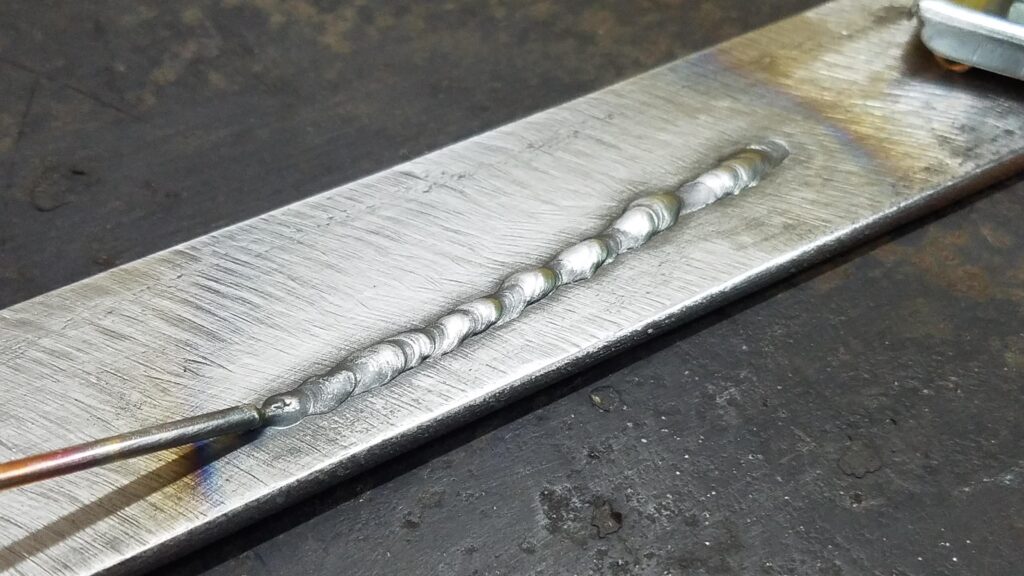
The bigger the amount of dabs, the better is the circular shape. This step highly influences the resultant weld.
As you know, TIG welding is not that simple; you should keep in mind a lot of things that can go wrong. Be prepared to control the electrode with one hand, the rod with the other, all while adjusting the amperage.
After the bead comes to an end, you have to make few adjustments to get it right. To get the most attractive appearance of a TIG weld is making little alterations just as you finish the bead.
TIG welding is the most decent process of a weld, and thus our welding process gets no spark. It is beneficial for you to increase the speed of filling to get much finer beads.
Also Check Best TIG Welder
MIG Welding Beads
MIG welding beads are universal as there are so many techniques for establishing a good weld. Some welders prefer to push the puddle, and some pull the puddle. Though, there isn’t any hard and fast rule to follow.
If you are a welder, then you don’t need to drag your puddle. However, It is recommended to analyze and ensure the presence of slag before dragging. If you push a stick rod MIG gun in maximum cases, the probability of slag trapping in the weld becomes higher. This consequence is enhanced porosity.
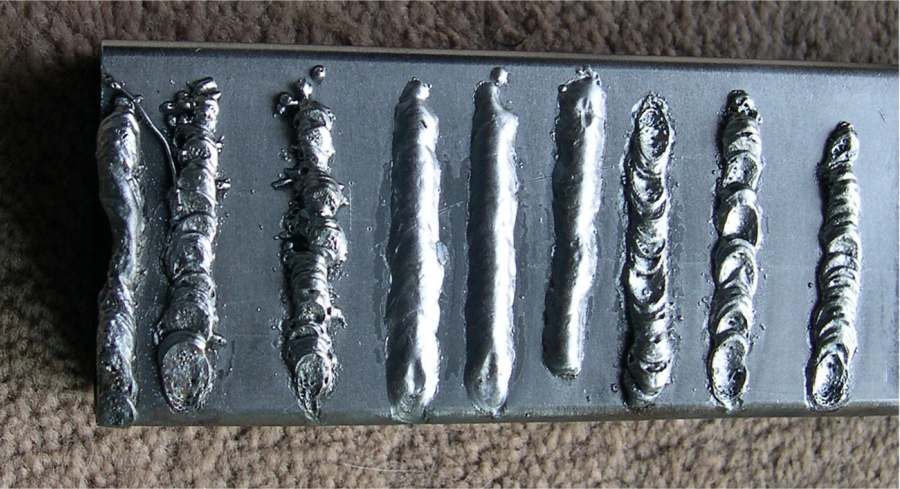
With flux-coated welding techniques, the dragging approach accelerates the slag to form and stiffen at the back of your puddle as you continue the welding process.
Most of the MIG welders don’t like to weave or use any welding beads pattern. They will completely create an upright bead with the aid of a stinger. Although this can produce a sound weld, using a weave as a welding beads pattern can benefit wider joints and straight welds. It scatters the filler metal out more, resulting in a fine bead.
MIG like TIG technique
A new trending thing in the welding process is the “MIG like TIG” technique. Now, you can get your MIG weld bead to look like the TIG dimes. It involves specific strategies with a low wire speed. These beads aren’t as harsh because the intense heat penetrates the metal a lot less than normal.
You May Also Like Best Welding Gloves
Not to mention, they have turned out to be a standard in the off-roading culture because of the clean and fine-looking welds (especially on car and vehicle parts). This technique can be fun too.
Flux Cored Beads
Flux core MIG can deposit a bunch of filler in a short period. Most of the flux-cored beads are run by simple electrode holders(stringers). Vertical Flux-cored welds will usually need a weave to regulate the puddle.
Weaving a flux-cored bead will save you from getting a “drip.” Eventually, when the weld gets too hot, and the molten metal drips off your piece of material onto the floor.
Stick Welding Beads
There are numerous bead characteristics in stick welding. The low hydrogen family of rods is quite versatile. We can use a common hydrogen type of rods which includes a low hydrogen rod. Use these beads effortlessly to draw a straight bead.
Moreover, these beads are much narrower than others. Weave type pattern is preferred in vertical welding. Thus, the welder can use many different patterns to spread the filler material on the alloy surfaces.
In stick welding beads, we can also go for some cellulose stick rods. 6010s and 7010s. These must be used with proper technique. It appears like a penny. The ending result leads you to a much similar appearance as that of a TIG weld. Although, these welds are not as impressive as TIG welds.
Moreover, with this technique, the welder is proficient in striking an arc while holding the rod in position to make a coin-like shape.
You May Also Like Best Welding Cart
Final Verdict
Welding tasks require a lot of effort and attention. To get the best welding bead, you can try several methods which are mentioned above.
Learning about techniques of welding beads are so much important in many other relating fields apart from welding, according to Thomas Steven of MyWoodGear Welding beads can also be used if you are a wood worker because there are times when a project needs both carpenter and welder so it can really be helpful that time.
We have tried our best to discover all the welding beads meant to deliver good results in your welding projects. Therefore by using multiple welding bead patterns, you will be able to get a good and attractive weld in all three types of welding, i.e., MIG, TIG, and Stick.
We have a list of Best TIG Welder Under $2000 Check out !




